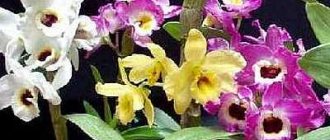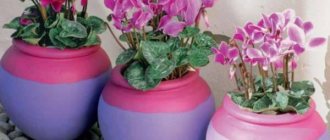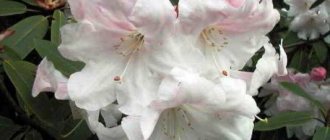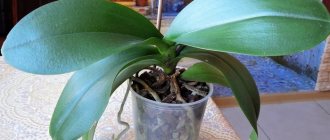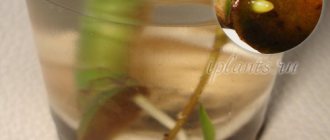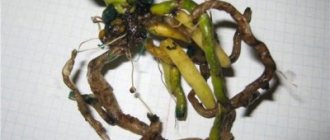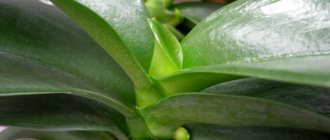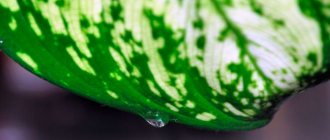Author: Elena N. https://floristics.info/ru/index.php?option=com_contact&view=contact&id=19 Category: Houseplants Published: January 28, 2019Last edits: January 11, 2021
- Growing from seeds
- Yucca turns yellow
- Yucca aloifolia
The love for the exotic is in our blood, and as soon as there is free space in the apartment, the owner immediately has a desire to place some outlandish large-sized one there. Ideally, a palm tree. Well, or at least a false palm tree... This is how dracaenas and yuccas appear in our apartments. By the way, did you know that yucca can be grown not only indoors, but also in the garden? The cold-resistant species Yucca filamentosa and its varieties are suitable for this.
What you need to know about yucca?
- What maintenance conditions and what care does the plant require?
- How can you propagate yucca at home?
- What problems may arise and how to solve them?
You will find answers to all these questions in our article.
Planting and caring for yucca
- Flowering: decorative deciduous plant, does not bloom at home.
- Lighting: bright sunlight (near the south window). There should be at least 16 hours of daylight, so in winter you will need additional artificial lighting.
- Temperature: in summer – normal for residential premises, in winter – not lower than 10 ˚C.
- Watering: abundant, after the soil has dried to a depth of 5-7 cm.
- Air humidity: any, but dry air is easier to tolerate.
- Top dressing: from April to August, once every 2-3 weeks, yucca leaves are sprayed from the underside with a very weak (twice weaker than the manufacturers recommend) solution of complex mineral fertilizer.
- Dormant period: from October to February.
- Transplantation: in spring, once every 2-4 years.
- Reproduction: seeds, apical cuttings, parts of the trunk.
- Pests: scale insects, spider mites, aphids, thrips.
- Diseases: stem and root rot, bacteriosis, gray and brown spots, bacterial burn.
Read more about growing yucca below.
flower (lat. Yucca) belongs to the genus of evergreen tree-like plants of the Agave family, although not so long ago it was included in the Liliaceae subfamily. Sometimes the plant is called "yucca palm", although it has nothing to do with palm trees. In floriculture, trees such as yucca and dracaena are called false palms. Yucca is native to the arid regions of Mexico and Central America. All 30 plant species are divided into two groups: stemless and tree-like. In nature, the tree-like yucca plant can grow up to 12 meters in height, while domestic yucca grows no higher than 2 m.
- Saintpaulia or violet for beginners
This is a beautiful, low-maintenance tree that can serve as a worthy decoration for a large room or office. Yucca flowers are sometimes called the “denim tree” because the first denim fabric was made from their fibers.
Why does yucca dry out, how to save yucca
The appearance of the leaves is an indicator of proper yucca care. As soon as any problems appear, this is immediately visible in its leaves.
- Dried brown tips on yucca indicate a lack of moisture in the air and the presence of cold drafts. In the first case, spraying the plant will help correct the situation; in the second, replanting it in a more comfortable place.
- The formation of brown spots on the leaf blade is a sign of a fungal disease that develops as a result of waterlogging of the soil caused by excessive watering, insufficient drainage, and low aeration of the soil substrate.
- The appearance of light, dry spots on the leaves is caused by an excess of sunlight. You can avoid them by creating light partial shade for the plant.
Features of cultivation
Caring for a yucca palm tree will not require much sacrifice from you. The only prerequisite for yucca in home floriculture is good lighting. The homeland of the yucca plant is desert and semi-desert areas, where it grows under the hot sun, so it is best to place it in close proximity to a southern window, but if the western or eastern window is well lit, you can place the yucca near them.
The second distinctive feature of the plant is that yucca does not bloom indoors, although in nature it blooms with large white bell-shaped flowers collected in panicles. If you arrange it for the winter in an insulated loggia, you may well have a chance to see the yucca bloom: the formation of flower buds occurs only during a long stay in the cold.
If you are impatient, buy a mature plant straight away, as yucca grows very slowly. However, keep in mind that yucca is popular, so it will cost you a lot.
A yucca's daylight hours should last at least 16 hours, which means that in winter it will be necessary to provide artificial lighting for it.
In all other respects, caring for the yucca plant is simple, you can even forget about it for a while, and it will not wither away from it.
How to feed yucca for abundant flowering
The yucca flowering period occurs in mid-June and lasts about a month. To provide it with the opportunity to abundantly form large flower buds during this period, it is recommended to add superphosphate fertilizers to the soil in the area where this exotic grows in early June.
Caring for yucca at home
Growing conditions
So, you have placed the yucca in a well-lit place where it will not yearn for the sunny climate of its homeland. As for watering, the main sign that it is time to moisten the soil is when it dries to a depth of 5-7 cm. To water five liters of soil in the summer, you will need approximately 1-1.25 liters of purified or at least settled water at room temperature. During the rest of the year, less water is needed, but you need to water, focusing on the same sign - drying out of the soil in the flowerpot to a depth of 5-7 cm.
If the ends of the leaves begin to darken, you are pouring too much water or watering the plant too often, which can lead to root rot. Yucca prefers a temperature at home from 20 to 25 ºC in summer, and not lower than 10 ºC in winter, but without drafts.
Yucca does not care about air humidity, but dry air is still preferable to humid air. This does not apply to the rare moisture-loving species of yucca, for which spraying is required in the summer, and a tray with wet gravel in the winter.
Fertilizer
Yucca is fertilized from April to August every two to three weeks with weak (twice weaker than recommended by the manufacturer) solutions of complex mineral fertilizers by spraying the underside of the plant leaves. The Belarusian fertilizer “Peat Oxidate” is well accepted by the plant. Do not fertilize immediately after transplanting the plant or when the yucca is unhealthy.
Transfer
Yucca is replanted in the spring if the plant’s pot has become too small (usually this happens once every 2-4 years) or it has problems with the root system - rot has appeared, which must be removed immediately. The newly acquired yucca is also replanted, first giving it a couple of weeks to adapt to the new conditions. How to replant yucca? The initial planting of yucca or its replanting is preceded by the selection of the optimal soil composition for the plant.
We offer you this simple but comfortable composition for yucca: one part each of humus, compost, turf soil, sand or perlite. The acidity of the soil mixture should be from 5.5 to 7.5 pH. Alkaline soil does not allow the roots to absorb many microelements. Test the soil: when watering, water should pass through the soil in a matter of seconds and flow out through the drainage hole. If water is retained, then the soil is not suitable for growing yucca.
Buy a deep, stable pot, fill it with a decent layer of expanded clay or fine gravel, then add some yucca soil. If your yucca is healthy, simply transfer it along with the earthen lump from the old container to the new one, add it to the voids of the soil and compact it.
- Pandanus at home: care, reproduction, types
If the plant suffers from rotting of the root system, you will have to first remove the rotten roots. To do this, let the soil in the yucca pot dry thoroughly, remove the yucca from the old pot, carefully shake off the soil from the roots, inspect the roots and remove the diseased parts by sprinkling the sections with crushed coal, then place the plant in a new pot with a drainage layer and fresh soil.
Yucca in winter
If in winter the yucca is in a hot room, and also suffers from short daylight hours, it grows: the leaves become thin, turn pale, droop and fall off, due to the weakening of the plant, harmful insects and various flower ailments begin to overcome it, and the yucca may die. Therefore, caring for yucca in winter consists of maintaining a cool temperature in the room and increasing daylight hours through additional artificial lighting, so that the light falls on the plant for at least 16 hours a day.
If you do not have the opportunity to lower the temperature to a value comfortable for the yucca, you can move the plant itself. For example, for the winter, yucca could be moved to a well-insulated, but not heated balcony or loggia.
Yucca in the fall, how to prepare yucca for wintering
Complex fertilizing applied at the beginning of autumn - 30-40 days before the onset of cold weather, will allow the plant to prepare for winter. Snow that suddenly falls at the end of autumn or at the beginning of spring is not scary for yucca. Long-term frosts and long-lying thick layers of snow are much more dangerous for her.
Attention! To prevent the plant from being damaged by the weight of fallen snow, it is recommended to tie it.
Yucca propagation
Growing from seeds
Yucca reproduces well by seeds, which must be scarified before planting - damaging the hard shell for faster germination of the seed. This is done by filing the skin of the seed with sandpaper. Scarified seeds are sown in a light earthen mixture consisting of equal parts of sand, leaf and turf soil, to a depth of 2-3 seed diameters and covered with glass or transparent film. The container with the crops is placed in a warm place (25-30 ºC) under bright, diffused light. The soil should be kept moist for ten days. Every day, the yucca crops are ventilated, the film is shaken off, and the glass is wiped dry from condensation.
Shoots usually appear within a month. When the sprouts produce a pair of leaves, they are planted in 100-gram disposable cups with soil of the same composition and a week later the first fertilizing is carried out with a solution of 1 g of nitrophoska in 1 liter of water. Carry out the next feeding of the same type in two weeks. When the yucca forms 4-5 leaves, it is already considered old enough for normal care.
Cuttings
Yucca grows so slowly that it takes a long time from the time it is sown until it becomes a tree. How to propagate yucca without waiting so long for it to grow? The process of growing yucca will go slightly, but still faster, if you use the vegetative method of propagation by cuttings.
It is better to carry it out in the spring, before active growth begins, but it is permissible to do it from March to August. The cut of the yucca cutting is pre-dried for 12 hours somewhere in the cool shade, then, leaving only a couple of leaves on it, it is stuck into perlite to a depth of 3-4 cm and fixed vertically. The cutting takes 3-4 weeks to root in constantly moist perlite (this is important!) in bright, diffused light and a temperature of 25-30 ºC. It is advisable to increase air humidity by periodic spraying.
Reproduction by parts of the trunk
When yucca grows too large for your room, you can make two or more smaller specimens from it. The top is cut off with a sharp knife and, having powdered the sections with crushed coal and dried for a couple of hours, they are rooted in boiled water, and after the roots appear, they are planted in the ground. If the trunk is too large, part of it can be cut off and placed in a pot, laying it horizontally on wet sand and pressing lightly against it. Soon the sleeping buds will wake up and sprout shoots with roots. You need to cut the yucca trunk into pieces according to the number of shoots, process the cuts and plant the sections in separate pots.
Treat the cut of the stump from the divided trunk with charcoal and continue to care for this remnant of yucca as usual, only slightly reduce watering. Soon, fresh greenery will appear on the stump.
How to cover a yucca for the winter
Yucca filamentous, like other varieties of this exotic grown in temperate climates, tolerate winters quite well, withstanding down to -15° C, and when covered, even up to -30° C. For this reason, yuccas growing in open ground do not They dig it up and just cover it up at the end of October - beginning of November. It is advisable to do this in dry weather. The method of covering a yucca for the winter depends on the availability of covering material and the size of the plant. Small yuccas should be tied with twine, collecting the leaves together, and then wrapped in burlap or agrofibre and covered with a box. Lay spruce branches or a layer of fallen leaves on top of it and secure everything on top with covering material - roofing material or foam plastic. Large yuccas can be insulated by covering the soil around them with a layer of leaves and placing boards on top. The plant itself must be collected in a bundle and tied with a rope, then covered with polyethylene on top, and the base of the trunk covered with soil.
Attention! The shelter must be opened at the end of March to prevent mold growth.
Pests and diseases
Caterpillars, scale insects, spider mites, aphids, thrips and some other pests can appear on yucca when it has health problems. Most often this happens when the plant is watered incorrectly or excessively. Immediately eliminate the cause of weakened yucca immunity and treat pests with systemic insecticides in accordance with the instructions.
A dysfunctional plant can also be affected by diseases, such as stem, root or bacterial rot, as well as gray and brown spots and fire blight. But you should know that a plant that is properly cared for very rarely gets sick.
Yucca turns yellow
Many novice gardeners anxiously ask the question: “What to do if the yucca turns yellow?” It is quite possible that you have been frightened by the natural process of ridding the plant of its lower leaves. But this is exactly how yucca grows up, so your anxiety is unfounded. But sometimes experienced flower lovers, who are well aware that yucca sheds its lower leaves, ask the same question (why does yucca turn yellow?), especially after the spots of yellowness acquire an elliptical shape and then turn brown. The plant acquires this appearance when it is infected with brown spot. Treat your yucca, but first address its lack of care.
Yucca leaves are drying up
If the lower leaves of the plant dry out, then there is no need to worry - in the natural course of things, the yucca is preparing to shed them. If dryness and yellowness also affect those higher leaves, then this is a sign that the yucca is hot and not light enough. If the tips of the leaves dry out, you will have to increase the air humidity in the room and re-read the rules for watering the plant.
Why do yucca leaves fall off?
If these are not the lower leaves, then the problem is most likely due to improper moisture. Study the rules of watering, correct mistakes and, if the root system has not yet died, the plant will gradually restore its appearance.
- Preparing soil for seedlings
Why doesn't yucca bloom?
Just as some animals do not reproduce in captivity, yucca does not bloom in indoor conditions. Almost never. In order for this to happen, it is necessary to create conditions for her that are as close as possible to natural ones, then she may make you happy with the flowering of her fragrant bell-shaped panicles.
Yucca diseases, how to treat
Usually yucca does not get sick, but hot, dry summers can cause it to be attacked by pests:
- spider mite;
- whiteflies;
- scale insects;
- thrips;
- mealybug;
- aphids.
You can get rid of them by treating plants with insecticides. Among home remedies, treating bushes with a solution of ash and laundry soap will help cope with pests.
In rainy, damp summers, yucca may suffer from an invasion of slugs. High soil moisture also promotes the development of fungal diseases and bacterial rot. Most often, yucca is exposed to:
- necrosis;
- gray rot;
- cercosporiosis of leaves.
Such pathogenic infections can be dealt with only with the help of fungicides and subject to timely treatment.
Kinds
Yucca aloifolia
A perennial with an erect trunk and a rosette of sword-shaped leaves at its top. The leaves are belt-shaped or lanceolate, olive-green in color, up to 55 cm long, arranged in a spiral.
Yucca elephantipes
The most common species in floriculture. In its natural habitat it is a very tall tree, the stem is thick and branched in the upper part, the leaves are 30-75 cm long and 5-8 cm wide, pointed at the top and tapering towards the base, sword-shaped, green. In a room, yucca of this species grows up to one and a half meters in height.
Yucca filamentosa
An almost stemless plant that grows horizontally thanks to root shoots. The root system is very deep, so this species is the most winter-hardy of all the others and can withstand frosts down to -20 ºC! The leaves are up to 70 cm long, up to 4 cm wide, bluish-green in color, with a pointed tip and pubescent edges with thin white twisted threads. It has a variegated shape with yellow-green or white-variegated leaves.
Yucca glauca
Also a stemless plant with narrow-linear leaves up to 70 cm long, bluish-green in color with a light border and thin, sparse, curly threads along the edge of the leaf.
The most commonly cultivated plants are Yucca ivory and Yucca aloe vera.
Description of the plant
Yucca is indigenous to Central America and its arid regions. Visually, it is similar to a Palm tree, especially in its natural habitat, when the leaves from the lower tiers dry out and fall off, the trunk becomes lignified and only a bunch of hard leaves remains at the top. But this is not Palma.
There is some confusion regarding the classification of Yucca. At first, Yucca was classified as a member of the Liliaceae family, then to the Agave family, and now to the Asparagus family. Moreover, Yucca is now simultaneously on the list of representatives of both. In general, there is complete confusion. In addition to Palma, it is also often confused with other indoor flowers similar to Palma - Dracaena and Cordyline. An experienced florist will not be mistaken; he will immediately see the difference. But for beginners, this similarity is a little confusing.
Large specimen of Yucca
In nature, Yucca grows as a fully or partially leafy large shrub from two to eight meters in height. Indoor species grow up to a meter or two. Its tree-like stem is topped with green or gray dense leaves, sticking out in different directions or slightly drooping, pointed lanceolate or xiphoid in shape.
Yucca blooms amazingly beautifully, throwing out powerful vertical peduncles, abundantly strewn with buds. Large flowers, up to 8 cm long, resemble cup-shaped bells. The flowers are most often white, but creamy-greenish, yellowish or pinkish tones are found in nature. The fruits are of no interest; they look like dry boxes.
Yucca is a popular indoor plant. It is unpretentious and hardy, most often grown as a standard tree with a thick trunk ending in plumes of lanceolate leaves.
Previously, this crop was classified as a palm tree; it is still sometimes called “false palm” or “palm lily.” In modern classification, the plant is included in the Agave family (Agavaceae). Yuccas are classified as a separate genus, in which there are approximately 40 species.
The natural habitats of yucca are deserts and semi-deserts of North and Central America. You can also see it in the countries of Southeast Asia and on some islands of the Caribbean. Plants grow profusely in open, sunny areas with sandy and rocky soils.
| Yucca stems accumulate water, which they use up during dry periods. |
The sizes of plants of different species also differ. There are huge trees that grow in nature up to 12 m in height (the famous “Joshua tree”), there are relatively small ones, up to 2.5 m (yucca glorious), and there are miniature plants whose height does not exceed 20 cm (Y. Standley).
Most species can be grown at home, offices, and winter gardens. Most often this is Yucca majestic, elephantine, beaked, aloel-leaved, Schott (Y. schottii), Treculeana (Y. treculeana). The most popular in interior design are tree-like plants with a single trunk or branched ones.
Yucca blooms in open ground, but very rarely in pots. The bell-shaped flowers are collected in panicles located on a high peduncle. The color is usually white, but may have a pinkish or cream tint. The size of the flowers and the height of the peduncle depend on the size of the plant. The flower can reach 6-7 cm in size, the peduncle grows up to 2 m.
| At home, the large height of the plant can become a problem for the gardener. To limit the growth of yucca, you do not need to choose large pots for it. |
Description
Yucca is often called the false palm because it looks similar, but the plant is a member of the Agave family.
Its natural habitat is the American continent.
Its hard leaves resemble palm leaves, depending on the species they can be from 20 centimeters in length to a meter. They also differ depending on the type of yucca in the color and shape of the leaves: they can be green or gray-gray, hard or softer, often with thorns at the tip of the leaf.
At home, yucca almost never blooms, but in nature it sometimes grows simply huge inflorescences of a large number of flowers. They reach 7 centimeters in length, have bright white and sometimes creamy yellow buds.
The fruits ripen in the form of a dry capsule, and in some varieties they are edible and juicy.
At home you can grow such a palm tree up to four meters in height.
There is no doubt that with such an exotic appearance, this beauty has a lot of fans. In addition, this plant is very unpretentious in maintenance and care.
